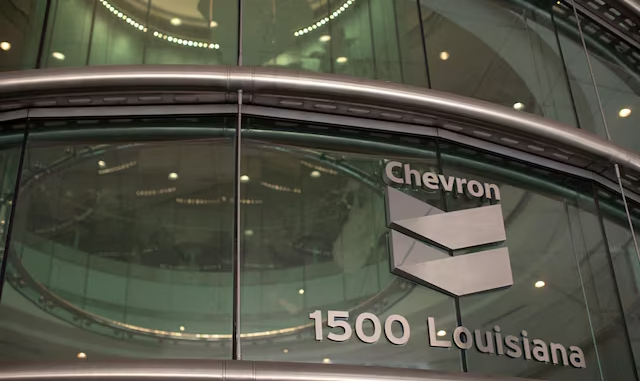
In a landscape where energy markets are grappling with uncertainties around oversupply and the push toward renewables, Chevron CEO Mike Wirth stands firm in his optimism for the oil and gas sector. Speaking recently, Wirth dismissed fears of a looming glut in oil supply, emphasizing a balanced outlook that aligns more closely with OPEC’s projections than those of the International Energy Agency (IEA). This confidence is underscored by Chevron’s strategic plans, which include only modest reductions in capital expenditures (CapEx) while gearing up for sustained demand growth. As Wirth put it, “Never in my career have I seen a higher confidence outlook… The best is yet to come.”
Let’s dive into his key comments and what they mean for the industry’s future.
Brushing Off Oversupply Concerns
One of the hottest topics in energy circles right now is the potential for oil oversupply in the coming year. The IEA has forecasted a surplus of around 4 million barrels per day (bpd)—equivalent to about 4% of global supply—which could pressure prices and force producers to scale back. However, Wirth isn’t buying into the alarm. Instead, Chevron’s perspective leans toward OPEC’s more optimistic view, anticipating that supply will roughly match demand in 2025.
This alignment suggests Wirth sees any potential oversupply as modest and likely short-lived, not a structural threat to the market.
This measured stance is reflected in Chevron’s operational decisions. Rather than slashing investments dramatically, the company is making targeted adjustments to navigate near-term volatility while keeping an eye on long-term growth. It’s a signal that Chevron believes the fundamentals of oil and gas remain strong, even amid fluctuating market signals.
Modest CapEx Cuts Signal Confidence in DemandChevron’s 2025 CapEx plans further illustrate Wirth’s bullish outlook. The company has announced a reduction of about $1 billion from its previous guidance, setting a new annual range of $18 billion to $21 billion through 2030.
At first glance, this might seem like a retreat, but in the context of the industry, it’s a relatively modest pullback—especially when compared to more aggressive cuts by peers in past downturns.
Why only a slight trim? Wirth appears to be betting on rising demand for oil and gas that will outpace any temporary supply imbalances. Chevron plans to grow its overall oil and gas production by 2% to 3% annually through 2030, a clear vote of confidence in the sector’s resilience.
In the U.S. Permian Basin, for instance, the company aims to maintain output at around 1 million bpd through 2040, not by ramping up well counts indefinitely, but through advanced drilling techniques that enhance efficiency and recovery rates.
This approach isn’t just about maintaining the status quo; it’s about positioning Chevron to capitalize on what Wirth sees as inevitable demand growth. Factors like global economic recovery, population expansion, and the limitations of renewable energy scaling could drive this need, ensuring oil and gas remain integral to the energy mix for decades.
Trillions Needed to Combat Decline Curves
Wirth’s vision extends beyond Chevron’s own operations to the broader industry challenges. He highlighted a critical issue: the natural decline curves of existing oil fields, which require massive investments just to keep production steady. According to Wirth, closing the impending oil supply gap over the next decade will demand investments equivalent to “five Saudi Arabias”—a staggering scale that translates to trillions of dollars in capital.
This isn’t hyperbole. Mature fields worldwide are declining at rates of 5-7% annually on average, meaning producers must continually invest in new exploration, enhanced recovery, and infrastructure to offset losses. Chevron is stepping up here too, planning a 50% increase in its annual exploration budget in the coming years, with expansions in promising basins like Namibia, Egypt, and South America.
The company is even bolstering its team by recruiting top talent, such as TotalEnergies’ exploration chief, to accelerate these efforts.
Wirth’s comments underscore a race against time: without these trillions in investments, supply could fall short of demand, leading to higher prices and energy security risks. It’s a call to action for the industry, emphasizing that oil and gas aren’t fading away—they’re evolving and requiring bold commitments.
A Tailwind from Policy and Cost Discipline
Adding to Chevron’s optimism is the supportive policy environment under U.S. President Donald Trump, whose pro-fossil fuel stance provides a regulatory tailwind for domestic producers.
Wirth is also focusing on internal efficiencies, targeting $3 billion to $4 billion in structural cost reductions by 2026, including workforce cuts of over 15% globally.
This discipline ensures Chevron can weather market dips while continuing to invest in high-return projects.
In summary, Mike Wirth’s message is clear: the future of oil, gas, and Chevron is bright, driven by resilient demand, strategic investments, and a pragmatic view of market dynamics. As the energy transition unfolds, companies like Chevron are not retreating but adapting, ready to meet the world’s ongoing needs. For energy enthusiasts and investors, this is a reminder that the oil and gas story is far from over—it’s just entering its next chapter. It is a long shot, but Stu Turley has reached out to get on Mike’s interview schedule. Who knows? He was able to land a few great interviews; let’s see if he can get past the roadblocks at Chevron.
Got Questions on investing in oil and gas?
ENB Top News
ENB
Energy Dashboard
ENB Podcast
ENB Substack








Be the first to comment